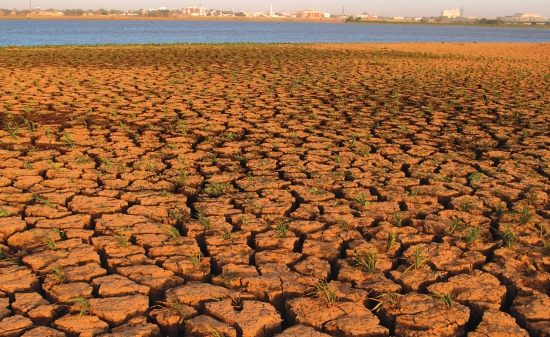Most people know that climate change will only bring destruction to the environment, such as rising sea levels and more powerful storms. It turned out that climate change also had an impact on the economic and social.
Indonesia is one of the country’s most vulnerable to disasters in the world, where natural disasters are a major factor transient food insecurity in Indonesia. Based on research from the Center for Research on the Epidemiology of Disasters (CRED), there are six countries (Indonesia, China, the United States, the Philippines, Afghanistan and India) were the most frequent natural disasters in 2012 and 2013. Natural disasters, deforestation and changes climate has a great potential impact on food security in Indonesia. The occurrence of extreme climate events that cause loss of crop production in significant amounts largely related to the El Niño / Southern Oscillation (ENSO).
Increased sea surface temperature by one degree Celsius is thought to have a significant negative impact on rainfall in the province of Maluku, West Nusa Tenggara, East Nusa Tenggara to the west, and most of South Sulawesi, North Sulawesi, Central Sulawesi and Central Java. Rainfall variability tends to disadvantage sustainable agriculture unless the availability of water storage system (reservoirs and dams) and adequate irrigation system.
Analysis of the impact of climate change on rice production in Java showed that rice production in 2025 and 2050, respectively will be reduced by 1.8 million tons and 3.6 million tons of rice production level at this time.
Deforestation moratorium since the beginning of the year 2011 role in lowering the rate of deforestation, but the rate of deforestation is still relatively high.
The agricultural sector, in addition to a contributor to GHG emissions, but agriculture is also the sector most affected by climate change, especially food crops. Climate change has led to a decline in productivity and crop production due to increased air temperatures, floods, droughts, the intensity of pests and diseases, as well as a decrease in the quality of agricultural products. The increase in atmospheric temperature by 5 C will be followed by a decrease in corn production by 40% and soybeans by 10-30%.
Meanwhile, the temperature increase of the current state 1-3oC decrease rice yields by 6.1 to 40.2%. This influence is also seen in legumes that indicate a link between a decreases in rainfall of 10-40% of normal conditions with a production decrease of 2.5-15%. Other data related to drought stress provides information that el nino that occurred in 1997 and 2003 caused a decline in rice yields of 2-3%. The decline may be more extreme if El Nino coupled with an increase in air temperature.
Consortium for Research and Development on Climate Change (KP3I 2009) IAARD predict that climate change caused by the El-Nino will expand the planting area is threatened by drought. Nationally paddy rice areas are threatened by drought has increased from 0.3 to 1.4% to 3.1 to 7.8%, while areas that suffer parched by drought increased from 0.04 to 0.41% to 0.04 -1.87%. Meanwhile, La Nina causes an increase in acreage of crops prone to flooding from 0.75 to 2.68% to 0.97 to 2.99%, and a planting area that suffered puso by floods increased from 0.73% to 0.24 from 8.7 to 13.8%. In aggregate, climate change could potentially increase the national production decline from 2.45 to 5.0% to more than 10%.
But surely there must be hope. COP21 PAris which has been ratified by countries with a greenhouse gas-producing the largest, such as America and China, bringing other countries to join in the action.
Indonesia in 2009 declared voluntary targets the reduction of GHG emissions compared to emissions if no intervention (business as usual / BAU) independently by 26 percent and 41 percent with foreign assistance. Thus was born the Presidential Regulation No. 61 Year 2011 on the National Action Plan for Greenhouse Gas Emission Reduction (RAN-GRK). Later, RAN-GRK Bappenas be re-examined. Along the way, RAN-GRK revised.










